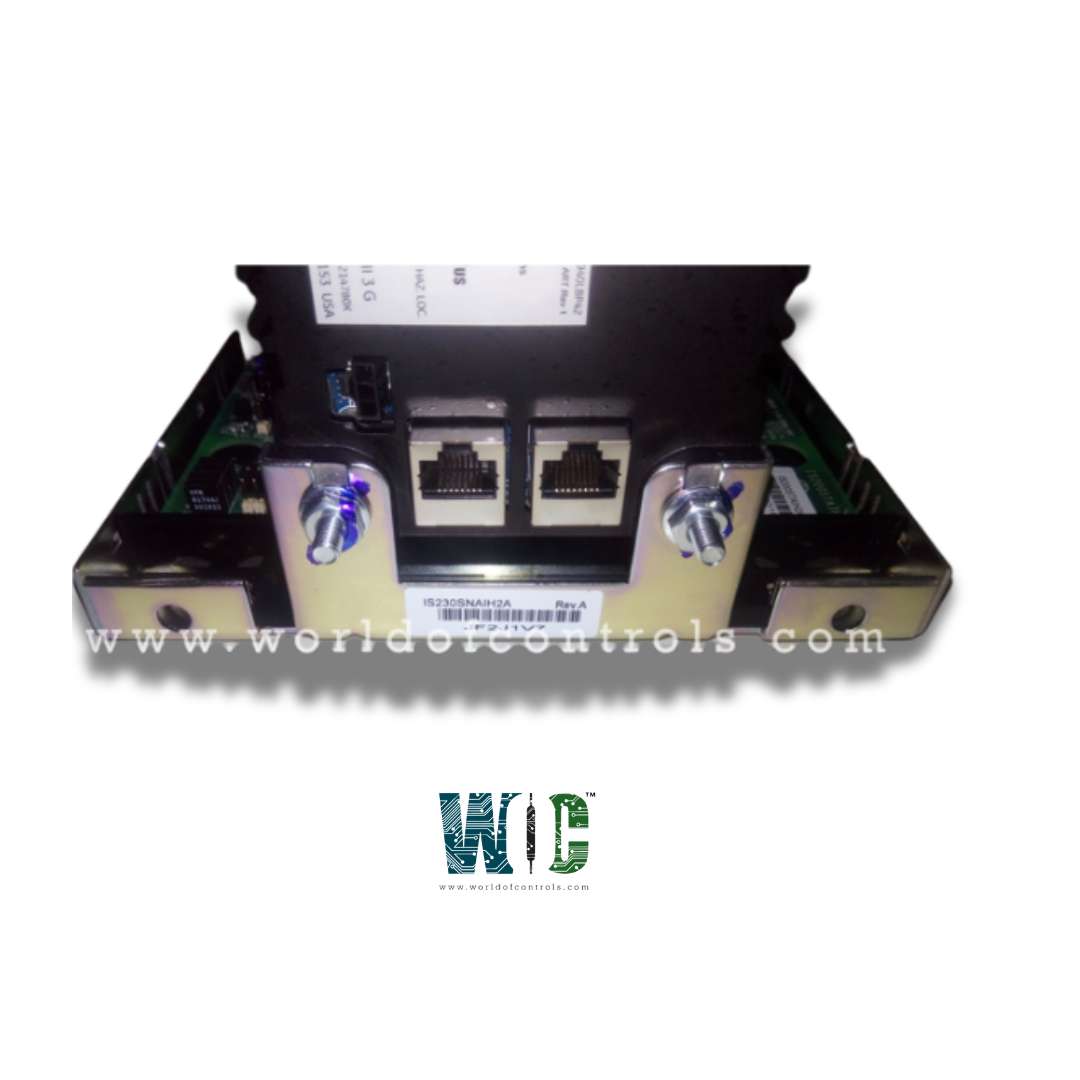
World Of Controls understands the criticality of your requirement and works towards reducing the lead time as much as possible.
IS230SNAIH4A, REV A - Analog I/O DIN Rail Module is available in stock which ships the same day.
IS230SNAIH4A, REV A - Analog I/O DIN Rail Module comes in UNUSED as well as REBUILT condition.
To avail our best deals for IS230SNAIH4A, REV A - Analog I/O DIN Rail Module, contact us and we will get back to you within 24 hours.
SPECIFICATIONS:
Part Number: IS230SNAIH4A, REV A
Manufacturer: General Electric
Series: Mark VIe
Product Type: Analog I/O DIN Rail Module
Number of channels: 16
Analog output current: 0-20 mA
Input Signal Types: 0-10V
Output Signal Types: 0-10V, 4-20mA
Maximum Lead Resistance: 15Ω
Input Impedance: >1MΩ
Analog output current: 0-20 mA
Power Supply: 12V - 36V DC
Mounting Type: DIN Rail Mount
Operating Temperature: -20°C to 70°C
Size: 10.16 cm wide x 33.02 cm
Frequency: 50 or 60 Hz
Repair: 3-7 Day
Availability: In-Stock
Weight: 2 lbs
Country of Origin: United States
FUNCTIONAL DESCRIPTION:
IS230SNAIH4A, REV A is an Analog I/O DIN Rail Module manufactured and designed by General Electric as part of the Mark VIe Series used in GE Distributed Turbine Control Systems. An Analog I/O DIN Rail Module is a crucial component in industrial control systems, acting as an interface between field devices and control hardware such as Programmable Logic Controllers (PLCs), Distributed Control Systems (DCS), and Remote Terminal Units (RTUs). These modules facilitate the acquisition and transmission of continuous analog signals, enabling real-time process monitoring and closed-loop control in automation applications. Their design, which includes DIN rail mounting, allows for modular, scalable, and space-efficient integration into control panels.
OPERATION:
The analog input (AI) section of the module is responsible for receiving signals from field sensors and transducers that measure temperature, pressure, flow, level, and other process variables. These signals are typically in the form of voltage (0-10V, ±10V) or current (4-20mA, 0-20mA) signals, which are then digitized by an Analog-to-Digital Converter (ADC). The resolution of the ADC (e.g., 12-bit, 16-bit, or 24-bit) determines the precision of signal processing, which is critical in applications requiring high accuracy, such as PID control loops in process industries.
To ensure signal integrity, analog inputs often include isolation barriers, signal conditioning circuits, and filtering mechanisms to eliminate noise and disturbances. Some modules support specialized inputs like RTD (Resistance Temperature Detector) and Thermocouple inputs, which require built-in compensation and linearization algorithms for accurate temperature measurements.
The analog output (AO) section of the module is used to send control signals to actuators such as valves, motors, servo drives, and variable frequency drives (VFDs). These outputs generate 0-10V or 4-20mA signals based on setpoints determined by the control system. A digital-to-analog converter (DAC) is used to convert digital control signals into continuous analog signals, allowing for fine-tuned manipulation of process parameters.
Analog outputs are commonly used in closed-loop control systems, where the controller (PLC or DCS) continuously adjusts the output based on real-time feedback from sensors. For example, in a PID (Proportional-Integral-Derivative) control system, the analog output modulates a valve position or motor speed to maintain a desired process variable within a specified range.
SIGNAL ISOLATION AND NOISE PROTECTION:
Industrial environments often introduce electrical noise and transient voltage spikes, which can affect signal accuracy. Galvanic isolation between input/output channels and the control system helps mitigate these issues by preventing ground loops and electrical interference. Additionally, built-in transient suppression, filtering, and shielding mechanisms ensure stable signal transmission, which is essential for reliable process control.
Analog I/O modules are essential for servo motor and variable frequency drive (VFD) applications, providing precise speed and position control. They allow real-time adjustments to motor speeds, ensuring smooth operation in manufacturing automation, robotics, and CNC (Computer Numerical Control) machines. The ability to generate accurate 0-10V or 4-20mA control signals ensures that motor drives respond precisely to command inputs from PLCs or motion controllers.
WOC maintains the largest inventory of Replacement Parts for GE Distributed Turbine Control Systems. Additionally, we offer warranty-backed unused and rebuilt boards as well as board repairs for your damaged ones. For your OEM needs, our team of professionals is available around the clock. We at WOC are happy to help you with any needs you may have in terms of automation. Please contact our team by phone or email for pricing and availability on any components and repairs.
What is an Analog I/O DIN Rail Module?
An Analog I/O DIN Rail Module is a device used in industrial automation to interfacing analog sensors and actuators with control systems like PLCs, DCS, and SCADA. It is mounted on a DIN rail for easy installation in control panels and converts analog signals into digital data for processing. These modules help in monitoring and controlling variables like temperature, pressure, flow, and voltage in real time.
What are the common signal types used in Analog I/O Modules?
Analog I/O modules support voltage (0-10V, ±10V) and current (4-20mA, 0-20mA) signals, which are industry-standard for sensors and actuators. Some modules also support RTD (Resistance Temperature Detector) and thermocouple inputs for precise temperature measurement. The signal type selection depends on the application, ensuring accurate data acquisition and control.
How does an Analog I/O Module handle signal scaling?
Analog I/O Modules use signal scaling to convert raw analog values into meaningful engineering units. This is achieved through software calibration or hardware DIP switch settings, allowing customization for specific sensor ranges. For example, a 4-20mA sensor can be mapped to 0-100°C in temperature measurement applications, ensuring accurate process control.